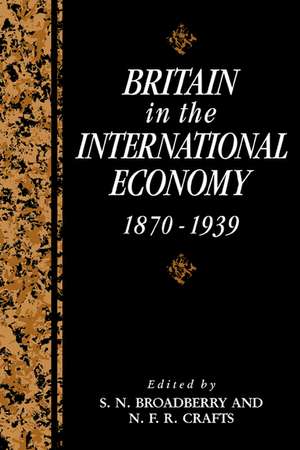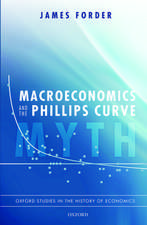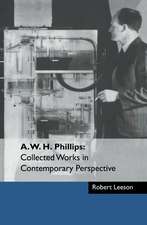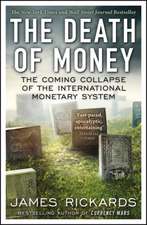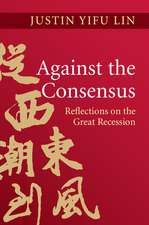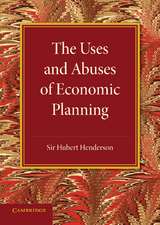Britain in the International Economy, 1870–1939: Studies in Macroeconomic History
Editat de S. N. Broadberry, N. F. R. Craftsen Limba Engleză Paperback – 4 noi 2009
| Toate formatele și edițiile | Preț | Express |
|---|---|---|
| Paperback (1) | 333.77 lei 6-8 săpt. | |
| Cambridge University Press – 4 noi 2009 | 333.77 lei 6-8 săpt. | |
| Hardback (1) | 821.79 lei 6-8 săpt. | |
| Cambridge University Press – 18 noi 1992 | 821.79 lei 6-8 săpt. |
Din seria Studies in Macroeconomic History
-
![Teach Your Kids about Countries [Vol4 ]: Version Adaptada Al Castellano Actual Por Rafael Antunez y Raul Alonso](https://i3.books-express.ro/bs/9781480268180/teach-your-kids-about-countries-vol4.jpg) Preț: 61.51 lei
Preț: 61.51 lei -
 Preț: 167.96 lei
Preț: 167.96 lei -
 Preț: 95.31 lei
Preț: 95.31 lei -
![Teach Your Kids about Countries [Vol 25]: Version Adaptada Al Castellano Actual Por Rafael Antunez y Raul Alonso](https://i0.books-express.ro/bs/9781480268401/teach-your-kids-about-countries-vol-25.jpg) Preț: 61.51 lei
Preț: 61.51 lei -
 Preț: 53.96 lei
Preț: 53.96 lei -
![Teach Your Kids about Countries [Vol8]: Version Adaptada Al Castellano Actual Por Rafael Antunez y Raul Alonso](https://i2.books-express.ro/bs/9781480268227/teach-your-kids-about-countries-vol8.jpg) Preț: 61.70 lei
Preț: 61.70 lei -
 Preț: 125.81 lei
Preț: 125.81 lei -
 Preț: 64.79 lei
Preț: 64.79 lei -
 Preț: 131.58 lei
Preț: 131.58 lei -
 Preț: 86.92 lei
Preț: 86.92 lei -
 Preț: 95.96 lei
Preț: 95.96 lei - 9%
 Preț: 592.70 lei
Preț: 592.70 lei -
 Preț: 74.52 lei
Preț: 74.52 lei -
 Preț: 238.93 lei
Preț: 238.93 lei -
![Teach Your Kids about Countries [Vol 22]: Version Adaptada Al Castellano Actual Por Rafael Antunez y Raul Alonso](https://i2.books-express.ro/bs/9781480268371/teach-your-kids-about-countries-vol-22.jpg) Preț: 61.51 lei
Preț: 61.51 lei -
 Preț: 54.03 lei
Preț: 54.03 lei -
 Preț: 46.84 lei
Preț: 46.84 lei -
 Preț: 92.61 lei
Preț: 92.61 lei -
![Teach Your Kids about Countries [Vol2]: Version Adaptada Al Castellano Actual Por Rafael Antunez y Raul Alonso](https://i1.books-express.ro/bs/9781480268166/teach-your-kids-about-countries-vol2.jpg) Preț: 61.51 lei
Preț: 61.51 lei -
 Preț: 135.03 lei
Preț: 135.03 lei -
 Preț: 75.99 lei
Preț: 75.99 lei -
 Preț: 104.33 lei
Preț: 104.33 lei -
 Preț: 130.65 lei
Preț: 130.65 lei -
 Preț: 201.10 lei
Preț: 201.10 lei -
 Preț: 83.38 lei
Preț: 83.38 lei -
 Preț: 63.20 lei
Preț: 63.20 lei -
 Preț: 177.10 lei
Preț: 177.10 lei -
 Preț: 56.92 lei
Preț: 56.92 lei -
 Preț: 40.48 lei
Preț: 40.48 lei -
 Preț: 62.62 lei
Preț: 62.62 lei -
![Teach Your Kids about Countries [Vol13]: Version Adaptada Al Castellano Actual Por Rafael Antunez y Raul Alonso](https://i2.books-express.ro/bs/9781480268272/teach-your-kids-about-countries-vol13.jpg) Preț: 61.51 lei
Preț: 61.51 lei -
![Teach Your Kids about Countries [Vol 17]: Version Adaptada Al Castellano Actual Por Rafael Antunez y Raul Alonso](https://i2.books-express.ro/bs/9781480268326/teach-your-kids-about-countries-vol-17.jpg) Preț: 61.51 lei
Preț: 61.51 lei -
![Teach Your Kids about Countries [Vol 5]: Version Adaptada Al Castellano Actual Por Rafael Antunez y Raul Alonso](https://i4.books-express.ro/bs/9781480268197/teach-your-kids-about-countries-vol-5.jpg) Preț: 61.51 lei
Preț: 61.51 lei -
 Preț: 123.49 lei
Preț: 123.49 lei -
 Preț: 59.67 lei
Preț: 59.67 lei -
 Preț: 96.04 lei
Preț: 96.04 lei - 8%
 Preț: 470.07 lei
Preț: 470.07 lei -
 Preț: 96.45 lei
Preț: 96.45 lei -
 Preț: 55.99 lei
Preț: 55.99 lei -
 Preț: 69.21 lei
Preț: 69.21 lei -
 Preț: 72.83 lei
Preț: 72.83 lei -
 Preț: 208.23 lei
Preț: 208.23 lei -
 Preț: 88.56 lei
Preț: 88.56 lei -
 Preț: 51.36 lei
Preț: 51.36 lei -
 Preț: 93.90 lei
Preț: 93.90 lei -
 Preț: 51.11 lei
Preț: 51.11 lei - 20%
 Preț: 45.72 lei
Preț: 45.72 lei -
 Preț: 212.46 lei
Preț: 212.46 lei -
 Preț: 71.19 lei
Preț: 71.19 lei
Preț: 333.77 lei
Nou
Puncte Express: 501
Preț estimativ în valută:
63.88€ • 66.44$ • 53.53£
63.88€ • 66.44$ • 53.53£
Carte tipărită la comandă
Livrare economică 13-27 martie
Preluare comenzi: 021 569.72.76
Specificații
ISBN-13: 9780521122603
ISBN-10: 0521122600
Pagini: 444
Dimensiuni: 152 x 229 x 25 mm
Greutate: 0.65 kg
Editura: Cambridge University Press
Colecția Cambridge University Press
Seria Studies in Macroeconomic History
Locul publicării:Cambridge, United Kingdom
ISBN-10: 0521122600
Pagini: 444
Dimensiuni: 152 x 229 x 25 mm
Greutate: 0.65 kg
Editura: Cambridge University Press
Colecția Cambridge University Press
Seria Studies in Macroeconomic History
Locul publicării:Cambridge, United Kingdom
Cuprins
Foreword Bryan H. Sadler; 1. British macroeconomic history 1870–1939: overview and key issues S. N. Broadberry and N. F. R. Crafts; 2. An economic historians' introduction to modern time series techniques in econometrics Terence C. Mills; Part I. Great Britain and Fluctuations Under The Gold Standard 1870–1914: 3. The gold standard since Alec Ford Barry Eichengreen; 4. British economic fluctuations in the nineteenth century: is there a role for money? Forrest Capie; 5. British economic fluctuations 1851–1913: a perspective based on growth theory N. F. R. Crafts and Terence C. Mills; Part II. Price Behaviour 1870–1914: 6. Price determination under the gold standard: Britain 1880–1913 T. J. Hatton; 7. Import prices, economic activity and the general price level in the UK 1870–1913 Neil Blake; 8. Money and interest rates in Britain from 1870 to 1913 T. C. Mills and G. E. Wood; Part III. The Open Economy Context Of Price And Output Movements 1870–1914: 9. Silver, gold and the international monetary order 1851–96 P. L. Cottrell; 10. The world economy and pre-World War I Argentina C. K. Harley; Part IV. The Macroeconomy In The Interwar Years: 11. Institutional rigidity in the British labour market 1870–1939: a comparative perspective M. Thomas; 12. Employment and wages in the interwar period: the case of the staple industries Ian Gazeley and Patricia G. Rice; 13. The gold standard between the wars John Redmond; 14. Purchasing power parity and controls during the 1930s S. N. Broadberry and Mark P. Taylor; References; Index.
Descriere
A review of the impact of Keynesian macroeconomics on research on the prewar British economy during the 1950s and 1960s.
